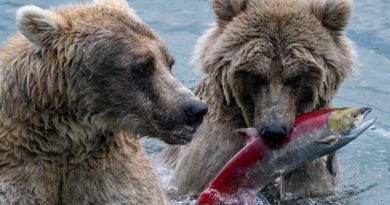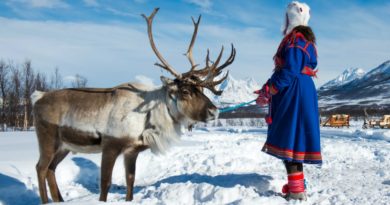Magical Encounters in New Zealand’s Lake Moeraki
Visit Lake Moeraki, and witness the movements of some of the world’s rarest species. This is a destination for nature lovers, active travelers and anyone seeking wild New Zealand!
The mountain range that runs the length of New Zealand’s South Island marks the contact zone of the Indo-Australian and Pacific continental plates. Known as the Southern Alps, or Kä Tiritiri o te Moana, it is a mountainous wilderness, with landscapes that have given the entire South Island of New Zealand its international reputation for superlative landscapes and rare wildlife.
Some 300 million years ago, the southern half of the Pangaean supercontinent, known as Gondwanaland, was a conglomerate of what we know now as Africa, South America, India, Antarctica, New Zealand and Australia. Extensive glaciation during this time period has bestowed New Zealand with some of the world’s highest mountains, rugged coastlines, deepest fjords and lakes. Both the North and South Island contain many flora and fauna inherited from the ancient stock of Gondwana. This region has become the world’s best intact modern representation of the ancient biota that existed during the time of the dinosaurs. Living representatives of this ancient biota include flightless kiwis and carnivorous land snails.
Travelers who are looking to be immersed in spectacular natural scenery across ancient landscapes, look no further than Natural Habitat Adventures’ New Zealand Nature Explorer. This trip is perfect for those who want to explore the largest and least modified areas of New Zealand’s natural ecosystems.

Explore an Untouched Natural Paradise
Te Wahipounamu – South West New Zealand World Heritage Area stretches 280 miles along the western coastline of the South Island of New Zealand. It is the largest and least modified area of New Zealand’s natural ecosystem and has remained virtually unchanged since the Polynesians discovered New Zealand. Te Wahipounamu got its name from the Maori, meaning the “waters of the green stone”, the land valued for its beauty and hardness. The area is within the ancestral territories of the Ngai Tahu tribe.
Te Wahipounamu has 15 glacier-cut fiords that deeply indent the Fiordland coastline, active glaciers that descend into a temperate rainforest, snow-capped mountains, lakes, rivers, wetlands and over 600 miles of wilderness coastline. More than 100 species of birds have been recorded in this World Heritage area, 28 of them threatened. The park lies within a Conservation International-designated Conservation Hotspot, a WWF Marine Global 200 Eco-region, and a BirdLife-designated Endemic Bird Area.
These largely unmodified habitats exhibit a high degree of geodiversity and biodiversity. At the heart of Te Wahipounamu is Lake Moeraki, the best place in New Zealand to witness the movements of some of the world’s rarest species, many of them completely unique to the island.
The Wilderness Lodge at Lake Moeraki provides travelers with spacious accommodations and locally guided excursions into the astonishing diversity of rainforest life. Guests are accommodated in spacious rooms, dining on fresh local produce, coastal seafood and farm-raised lamb.

Kayak on Lake Moeraki and Walk Among Glowworms
Located far from urban light pollution, take advantage of Lake Moeraki’s cover of darkness on a guided night walk. A star talk is included, as well as a chance to look for glowworms, whose bioluminescent pearl strands dangle from the trees. Witness how the delicate blue lights of glow worms are hidden among rain forest ferns and gaze into a brilliantly dark sky to see the Milky Way, Southern Cross, planets and satellites. Hike wilderness beaches, kayak pristine lakes and more with fun and exciting small-group nature adventures.
Thanks to conservation efforts by the Department of Conservation and the Wilderness Lodge, the birdlife here is thriving.

Tawaki Penguin—A Rare Rainforest Nesting Penguin
Tawaki, also known as the Fiordland crested penguin, can only be seen in the southwest corner of New Zealand’s South Island, most easily along the Lake Moeraki coastline. These are the only penguins that live in the rainforest. About 2,000 pairs remain, with 10 percent of the population found along the shores of Lake Moeraki. Since 1989, Wilderness Lodge Lake Moeraki has taken guests to see tawaki under a special license from the Department of Conservation. Guides are experts in penguin ecology and delight in sharing this once-in-a-lifetime experience with guests.
Visit during October and November to catch tawaki nesting in the rain forest along the Lake Moeraki Coast. At other times of the year, take a rain forest hike to discover thousand-year-old trees, myriad ferns and orchids, and to search for birdlife in this protected natural environment.

Kea— the Clown of the Mountains
Kea, the world’s only endangered alpine parrot, often seen around Lake Moeraki, is the world’s only mountain parrot. Kea is nicknamed the ‘alpine parrot’ in reference to the kea’s native range of the forested and alpine region of New Zealand’s South Island.
The Institute of Cognitive Biology in Vienna has recently named the kea the world’s smartest bird, their intelligence rivaling some monkeys. This might explain why the kea is also referred to as the “clown of the mountains.” They have a well-documented explorative nature, that often includes fearless encounters with people. The bird has become its own tourist attraction, its fun-loving nature leaving locals and travelers amused and delighted.
A destination for nature lovers, active travelers and anyone seeking wild New Zealand, Lake Morekai provides unlimited encounters with some of the world’s rarest wildlife and plant species. Learn about the region’s native ecology and conservation efforts from native New Zealanders, and feel good knowing that Nat Hab offsets 100% of the carbon emissions from your round-trip flights.
Wilderness Lodge Lake Moeraki has been at the forefront of nature conservation for more than three decades. After campaigning to have the area protected, Anne Saunders and Gerry McSweeney established the lodge in 1989 to demonstrate the value of ecotourism as a sustainable alternative to native forest logging. Anne and Gerry continue to own and run the lodge today. Few places on Earth can match the natural setting of the lodge, situated in the heart of the 6.7 million-acre South West New Zealand World Heritage Area, Te Wahipounamu.
About the author: Samantha Miller View all posts by Samantha Miller
Samantha Miller is a passionate and engaged storyteller focused on shifting environmental narratives to support both people and the planet. She is a contributing author to one of the first books to document the role of women in wildlife sciences and a board member of the Black Girl Environmentalist online community.




